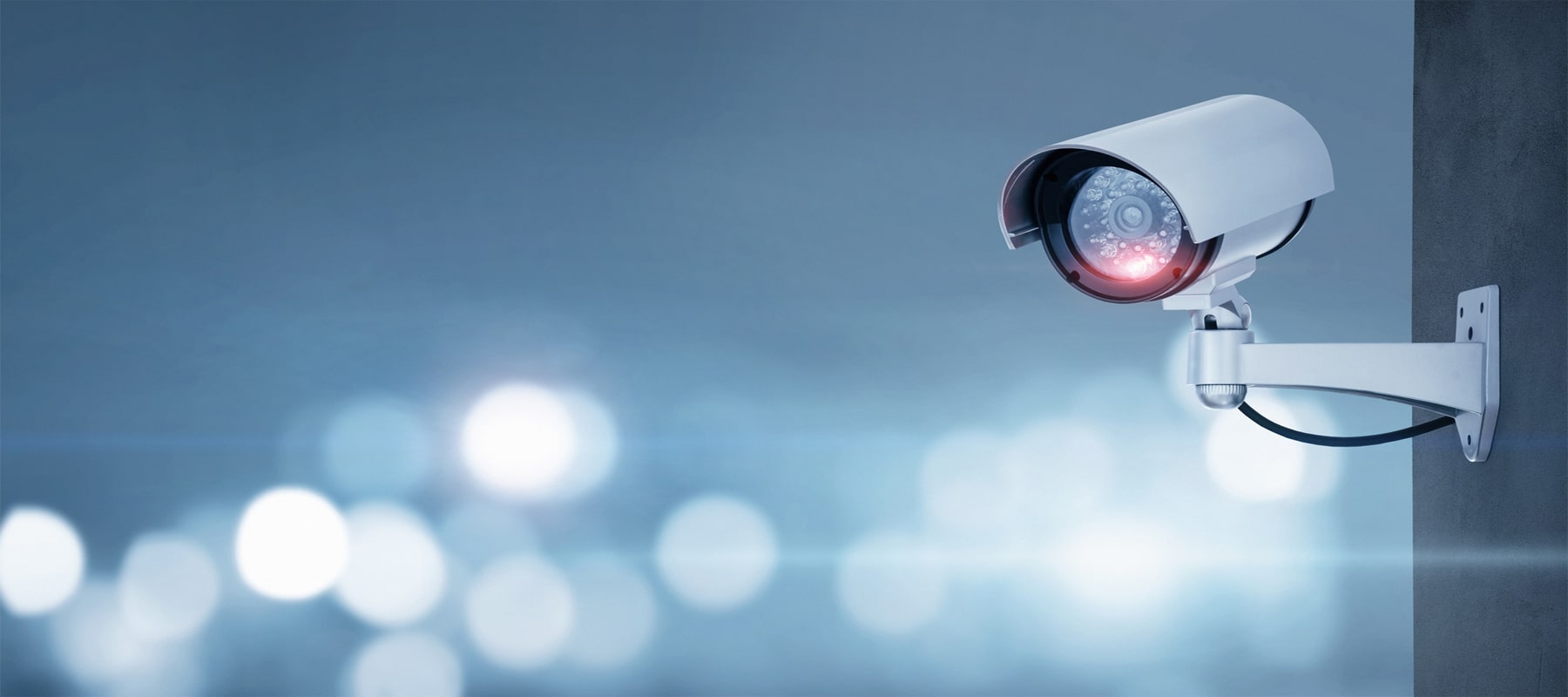Securing Your Commercial Property with Video Surveillance Solutions
Last Updated: June 05, 2023

Fact Checked By: Ryan Maguire
On This Page
CostOwl.com note: Need a video surveillance system at an affordable price? Fill out the 30 second questionnaire below and our video surveillance partners will send you free price quotes.
Summary: Commercial Security Camera Installation Cost #
Generally, the installation cost for commercial security cameras can range from $500 to $2,500 or more.
Pricing varies based on the type of camera and system you purchase. You also pay more as you add features, such as LCDs and intercoms. Camera specs also influence cost, including:
- The power of the lens of the cameras, the higher the power, the more expensive the camera
- Features such as night vision, recording, voice recording, heat protection, and moisture protection raise the price
- Newer models cost more due to their advanced technology
- System packages that link cameras to an alarm system cost more than a separate recording camera
Understanding Commercial Surveillance and Why it is Important #
Commercial surveillance is the close monitoring of security operations within a commercial establishment by using security cameras. These security cameras are used to enhance commercial intelligence and aid in putting a lid on costs of theft. With commercial surveillance, this can aid commercial buildings to deploy their personnel in an effective way for the purposes of combating security threats. Commercial surveillance comes with the state-of-the-art video equipment and digital systems to offer ample security for commercial buildings. Depending on the size of the building the system is wanted for, it may be more complicated than at first thought.
Pros of Commercial Video Surveillance #
Commercial surveillance ensures safety in a commercial workspace while at the same time protecting assets. This is achieved by using state-of-the-art commercial security cameras. Many commercial surveillance systems allow commercial buildings to choose standalone cameras. Standalone video cameras are essential because they can cover the most vulnerable areas of a commercial building such as cash registers and safes. In addition, standalone video cameras can capture every event that is happening at the commercial building. Commercial surveillance systems can also be installed outside of a commercial building. In this case, weatherproof cameras are used in order to manage the security aspect of the commercial building, cut down on property damage and vandalism. With multi-camera systems installed in a commercial building, this can help increase security and reduce the toil on security personnel. Cameras can also cover areas where it is thought most thefts occur.
Points to Consider When Looking for a Commercial Video Surveillance System #
- Remote Surveillance – a good commercial surveillance system should accommodate remote surveillance. This is to enable security personnel in a commercial building to observe events within and outside of the commercial building through the cameras but from a remote location.
- Networked Video Solutions – the reason to consider networked video solutions is to allow the IT infrastructure in a commercial building to be used effectively to route video cameras throughout the enterprise. Integrated commercial systems can serve as single points of contact for all commercial IT needs and commercial video security systems.
- Surveillance Monitors – it is important that a commercial surveillance system provider should allow you to choose from a range of monitors to help survey a commercial building. Some of the monitors should include LCD screens, which should come with touch features, flat panels and public view options.
Sample Prices for Video Commercial Surveillance #
Video surveillance systems are relatively affordable, with basic systems for the home starting at just a few hundred dollars. Generally, you can expect to pay about a total of about $500 to $1,000 per camera for a complete package. That includes installation but not the cost of optional recording devices.
However, simply buying a camera is not enough. There are many accessories and options from which to choose, and it can be tricky to figure out what equipment you need. Read on to find out about the various parts and components to a video surveillance system and how much you can expect to spend on each one.
You can buy a pre-packaged kit video surveillance kit on the Internet for $150 to $200 per camera. But the cameras are usually not high quality. You also won't get the benefits of professional installation, service and support. It's usually best to go through a professional dealer who can work within your budget to select the highest quality system for the best price.
Basic cameras generally run $100 to $250 each, while hidden cameras are more expensive at around $200 to $400 each. Most of the time that does not include the price of a lens, which runs $100 to $300 for a fixed variety and upwards of $1,000 if it includes a zoom feature.
DVRs cost anywhere from $500 to $1,000 for a single channel. However, larger businesses with dozens of cameras will need several channels, which increases the price significantly. You could also opt for a time-lapsed VCR, which is outdated technology but can still be purchased for a few hundred dollars.
Monitors vary widely in price, depending on size and quality. They start at around $150 and range all the way up to several thousand for large, flat panel screens. Protective covers, also called housings, run anywhere from $20 to more than $200.
The Best Commercial Security Camera Monitoring Companies with Pricing #
ADT: Offers professional monitoring with pricing typically ranging from $45 to $65 or more per month.
Brinks Home Security: Provides commercial monitoring services with pricing starting around $40 to $60 per month.
Vivint: Offers customizable monitoring solutions with pricing starting around $50 per month.
Protection 1: Provides commercial monitoring services with pricing based on system size and specific needs.
Comcast Xfinity: Offers monitoring services with pricing determined by the selected package and additional services.
Video Surveillance System Equipment and Accessories #
Aside from just a camera, you'll need power cables and connectors, lenses and at least one monitor for viewing. Unless you have someone to watch the monitor 24 hours a day, you'll also need a DVR or similar device to record your footage. Depending on the surveillance system you select, you may also need a hard drive, modem or small computer system.
There are many options for the cameras themselves. Some of the most popular types include:
- Bullet-shaped: traditional indoor/outdoor cameras that allow you to see facial features at a distance of up to 35 feet. These are the most popular cameras, and probably what you imagine when you think of video surveillance.
- Dome-shaped: Indoor cameras protected with a dome-shaped cover. They are sometimes sold in tamper-proof varieties.
- C-mounted: Primarily indoor cameras that allow you to change the lens to reach distances of more than 35 feet.
- Infrared: Cameras that can pick up images with little or no light. They are often bullet shaped and can be used indoors or outdoors.
- Hidden: Cameras that can be concealed in plants, smoke detectors, clocks or other household objects.
It can be confusing to sort through all the types of equipment available, but the video surveillance dealer you select can walk you through all the options and help you settle on a complete surveillance package that includes everything you need.
When to Upgrade Your Security Cameras #
Much like any other appliance, a security camera is designed to function for only a certain amount of time. During the first few years, you may notice that all it takes to keep your security camera system in tip-top shape is basic and minimal inspections or maintenance. But over time, the system begins to falter, gradually requiring more and more effort to keep it running at even its base level.
It is entirely possible for a security camera system to run for 10 to 15 years, but that doesn't mean you should wait that long to replace or upgrade your system. A good time to start truly considering an upgrade is after about five to seven years. Besides the age of the system itself, there are other signs that let you know it is time for an upgrade. If you find that you are constantly having to repair your cameras, the response times are delayed, or the system keeps freezing, it might be time to upgrade your old security cameras.
Security Camera Upgrade #
Camera technology is always improving and that has never been more evident than within the last few years. Ten years ago, getting an HD camera would have been difficult and expensive, but that is not the case today. Upgrading to an HD security camera system is easier and more affordable than ever. And making the switch to HD is well worth it, as it provides a clearer image and greater identification should the footage be needed in case of a crime.
It may seem daunting, but worry not! You don't need to upgrade all of your cameras at the same time, even if you're switching from an analog system to a digital one. There are several options for upgrading your security camera system, including:
- HD-SDI: This type of security camera system allows you to upgrade your cameras and DVR while keeping your existing coax cabling and SD system. It is perhaps the cheapest option when upgrading your security camera system.
- HD-TVI: This is another hybrid-type system that allows you to use the same cables and setup of your analog system, letting you keep any existing SD cameras running while still maintaining HD systems that run at 720p or 1080p. HD-TVI is incredibly versatile, as it does not require you to upgrade cameras or perform rewiring until you want to.
- IP cameras: Different than either HD-SDI or HD-TVI, IP cameras do not need to be directly wired into a recording device. If your cameras and NVR are connected to your computer network, then everything will run without issue. IP systems can also communicate with other devices (lighting, POS systems, etc.) and connect to video analytic software providers. While it is the most unique security camera system, it is also the most expensive, as you have to purchase new cameras and hardware.
It is not easy to determine the best prices for commercial surveillance systems due to the many players involved as well as a host of features to consider. In most cases, the cost of implementing a commercial surveillance system will depend on the equipment used. Equipment may include the software to be installed on dedicated computers, USB receivers to be plugged into available outlets, wireless video cameras to be mounted in specific locations and DVR or Network Attached Storage devices. It is therefore important to get quotes from different companies in order to determine the prices for each system and the overall prices for implementing the system
Resources:
